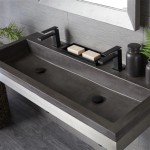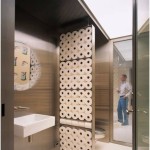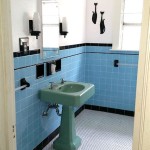Bathroom Cabinet Paint Kits: A Comprehensive Guide
Bathroom cabinet painting represents a cost-effective alternative to full-scale replacements, providing a refreshed aesthetic without the significant expense and disruption associated with new installations. Bathroom cabinet paint kits offer a convenient and often all-inclusive solution for homeowners seeking to revitalize their bathroom's appearance. These kits typically contain the necessary materials and instructions, facilitating a DIY approach to cabinet refinishing.
The viability of using a bathroom cabinet paint kit hinges on several factors, including the existing cabinet material, the desired finish, and the user's comfort level with DIY projects. While these kits offer convenience, understanding their components, application process, and limitations is critical for achieving professional-quality results. Careful preparation and adherence to instructions are paramount to ensuring a durable and visually appealing finish that withstands the humid environment of a bathroom.
Understanding the Components of a Bathroom Cabinet Paint Kit
A typical bathroom cabinet paint kit is designed to streamline the cabinet refinishing process. The specific contents vary based on the manufacturer and the intended paint finish; however, most kits include a core set of essential components. These components are selected to work synergistically, promoting adhesion, durability, and an aesthetically pleasing outcome.
Primer is a crucial element in most kits. Its primary function is to create a bond between the existing cabinet surface and the new paint layers. The primer promotes paint adhesion, preventing peeling and chipping over time, particularly in the moisture-prone environment of a bathroom. Primers also help to seal the existing surface, preventing stains or underlying colors from bleeding through the new paint. Some kits may contain self-priming paints, which combine the primer and paint into a single product.
Paint is the element that provides the desired color and finish. Bathroom cabinet paint kits commonly feature paints formulated for high humidity environments. These paints are typically durable, moisture-resistant, and easy to clean. Acrylic and enamel-based paints are popular choices because of their resilience and ability to withstand repeated exposure to water and cleaning products. The paint may be available in a variety of finishes, including matte, satin, semi-gloss, and gloss, allowing users to customize the appearance of their cabinets.
Cleaning and preparation solutions are often included to remove grease, grime, and other contaminants from the cabinet surfaces. These cleaning agents are specially formulated to prepare the cabinets for painting, ensuring optimal paint adhesion. Deglossers may be included to dull the existing finish, further enhancing paint adhesion.
Application tools such as paint brushes, rollers, and paint trays are often provided to ensure a smooth and even application of the primer and paint. High-quality brushes and rollers minimize brush strokes and roller marks, resulting in a professional-looking finish. Some kits may also include masking tape to protect surrounding surfaces, such as walls and countertops, from paint splatters.
Sandpaper or sanding sponges, with varying grits, are often included. These are used to lightly sand the cabinet surfaces, creating a slightly rough texture that promotes paint adhesion. Sandpaper is also useful for smoothing out any imperfections or blemishes on the existing cabinet surface.
Step-by-Step Guide to Using a Bathroom Cabinet Paint Kit
Successfully using a bathroom cabinet paint kit requires meticulous preparation and adherence to the instructions provided by the manufacturer. Deviating from the recommended procedures can compromise the quality and longevity of the finished product. The following steps provide a general outline of the process, but users should always consult the specific instructions included with their chosen paint kit.
Surface preparation is the most critical aspect of the entire process. Begin by removing all hardware, such as knobs, pulls, and hinges, from the cabinets. Thoroughly clean the cabinets with the included cleaning solution or a suitable alternative such as a degreasing cleaner. Remove all traces of dirt, grease, and mildew. Rinse the cabinets with clean water and allow them to dry completely.
Lightly sand the cabinet surfaces with the provided sandpaper or sanding sponge. Focus on creating a slightly rough texture that will promote paint adhesion. Sand in the direction of the wood grain if applicable. After sanding, thoroughly remove all sanding dust with a tack cloth or a damp cloth. Allow the cabinets to dry completely before proceeding.
Apply masking tape to protect surrounding surfaces, such as walls, countertops, and flooring, from paint splatters. Ensure that the tape is securely adhered to create a clean and precise paint line.
Apply a thin, even coat of primer to the cabinet surfaces using a brush or roller. Follow the manufacturer's instructions regarding dry time. Allow the primer to dry completely before proceeding to the next step. Some kits may feature self-priming paints, which eliminate the need for a separate primer application.
Once the primer has dried completely, apply the first coat of paint. Use a brush or roller to apply a thin, even coat of paint to the cabinet surfaces. Avoid applying too much paint at once, as this can lead to drips and uneven coverage. Allow the paint to dry completely before applying the second coat. Follow the manufacturer's instructions regarding dry time between coats.
Apply a second coat of paint to achieve full coverage and a uniform finish. Use the same application technique as with the first coat. Allow the paint to dry completely before handling the cabinets or reinstalling the hardware. Consider applying a clear topcoat for added protection and durability, especially in high-use areas.
Carefully remove the masking tape, pulling it away from the painted surface at a 45-degree angle. Reinstall the hardware, ensuring that it is securely fastened. Allow the paint to fully cure according to the manufacturer's instructions before exposing the cabinets to moisture or heavy use.
Factors to Consider When Choosing a Bathroom Cabinet Paint Kit
Selecting the appropriate bathroom cabinet paint kit requires careful consideration of several factors, including the type of cabinet material, the desired finish, and the specific challenges of the bathroom environment. Choosing the correct kit can significantly impact the final result and the longevity of the refinished cabinets. Improper selection can lead to peeling, chipping, and other issues that compromise the aesthetic appeal and functionality of the cabinets.
The existing type of cabinet material is a primary consideration. Different materials require different types of primers and paints to ensure proper adhesion and durability. For example, laminate cabinets require a specialized primer that can bond to the slick, non-porous surface. Solid wood cabinets, on the other hand, may benefit from a stain-blocking primer to prevent tannins from bleeding through the paint. MDF cabinets require a primer that can seal the porous surface and prevent the paint from soaking in unevenly. Identifying the cabinet material is critical for choosing the right kit that is specifically formulated for that substrate.
The desired paint finish is another important factor to consider. Paint kits are available in a variety of finishes, including matte, satin, semi-gloss, and gloss. Matte finishes offer a low-sheen appearance that is ideal for hiding imperfections. Satin finishes provide a subtle sheen that is easy to clean. Semi-gloss finishes offer a higher sheen that is more durable and moisture-resistant. Gloss finishes provide the highest sheen and are the most durable and moisture-resistant, but they can also highlight imperfections. The choice of finish depends on the desired aesthetic and the level of durability required for the bathroom environment.
The specific characteristics of the bathroom environment also play a role in the selection process. Bathrooms are typically humid environments, so it is essential to choose a paint kit that is formulated to withstand moisture and humidity. Look for paints that are specifically labeled as being moisture-resistant or mildew-resistant. These paints are designed to prevent the growth of mold and mildew, which can be a common problem in bathrooms. Additionally, consider paints that are easy to clean, as bathroom cabinets are often exposed to spills and splashes.
The level of VOCs (volatile organic compounds) in the paint is another factor to consider, particularly for individuals with sensitivities or allergies. VOCs are chemicals that are released into the air as the paint dries. Low-VOC or zero-VOC paints are available and are a healthier option for indoor use. These paints release fewer harmful chemicals into the air, reducing the risk of respiratory irritation and other health problems.
Finally, reviews and ratings could provide valuable insights into the performance and ease of use of different paint kits. Reading reviews from other users can help to identify potential problems or limitations of a particular kit. Look for reviews that discuss the durability of the paint, the ease of application, and the overall satisfaction of the users.

How To Paint Bathroom Vanity Cabinets Tutorial Benjamin Moore

Nuvo Driftwood Cabinet Paint Kit Giani Inc

How To Paint Bathroom Vanity Cabinets Tutorial Benjamin Moore

Nuvo Tidal Haze Cabinet Paint Kit Giani Inc

Painting A Bathroom Vanity Without Sanding Love Renovations

Planning For My Next Diy Bathroom Makeover Taren Tooten

Rust Oleum Transformations Dark Color Cabinet Kit 9 Piece 258240 The Home Depot

Transform Your Bathroom Vanity In A Weekend Making Pretty Spaces Blog

16 Modern Bathroom Cabinet Vanity Makeover Ideas The Diy Nuts

Rust Oleum Transformations Dark Color Cabinet Kit 9 Piece 258240 The Home Depot







